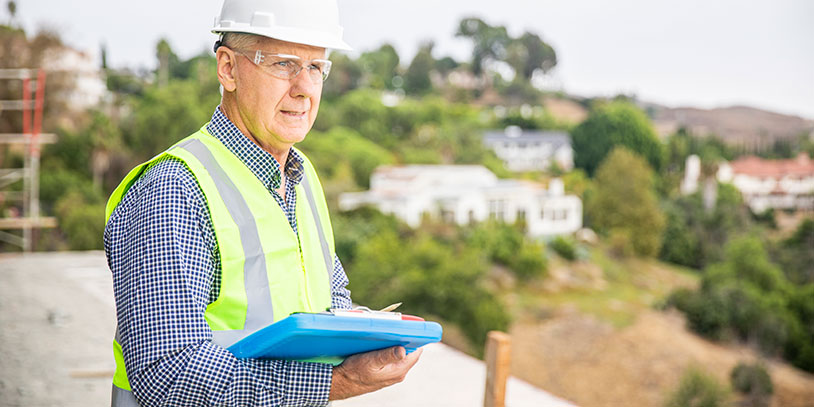The Evolving Relationship Between Technology and Damage Prevention

The connection that exists between the damage prevention industry and the everchanging field of technology is significant. Advancements in either field naturally impact the other and both sectors evolve at a fast pace. The implementation of new technology within one call centers, utility locating, GIS/GPS, imaging, utility mapping, and excavation has an extraordinary influence on the state of damage prevention.
Communication is crucial in any environment, and one call centers are undoubtedly the epicenter of communication within the damage prevention industry. Technology utilized in 811 call centers has been strengthened and expanded upon tremendously throughout the years. One call centers are now able to take advantage of predictive analytics, risk assessment tools, simplified direct lines of contact with excavators, positive response that provides ancillary information to excavators on completed locates, and more.
Utility locators fulfill an especially critical role in damage prevention. While the significance of an experienced locator is unparalleled, locating equipment has been bolstered to provide the most fitting tools for each job site. Electromagnetic locating devices offer signal distortion detection, mitigation of ambient noise issues, and evaluation of measured depth accuracy. Ground penetrating radar (GPR) is constantly evolving to become more approachable in both hand cart and mobile vehicle form, and now integrates multiple frequencies as well as 3D radar tomography. RFID markers and electronic white-lining are also being utilized in the advancement of utility locating.
Similarly, the GIS/GPS and imaging fields have seen an immense expansion of technological possibilities. Real time kinematic GPS, satellite imagery, locate ticket management solutions with integrated GIS data, asset visualization, and geofencing are all being utilized to strengthen damage prevention efforts today. Imaging has grown to include UAVs (Unmanned Aerial Vehicles), land and aerial LIDAR (Light Detection and Ranging) surveys, synthetic aperture radar, aerial hyperspectral imaging, thermal imaging, and beyond.
Damage prevention outcomes are heavily dependent upon accurate and widely accessible utility mapping data, and the technology behind utility mapping has broadened greatly. The process of mapping underground utilities has been made simpler and mapping data has been made more accurate because of the introduction of subsurface utility engineering, RTK/GNSS, LIDAR of exposed utilities, RFID markers, mapping vehicle carts, sensor fusion, and geospatial data collection and management.
Processes surrounding excavation have improved to support safe digging even further. Vacuum excavation using air or water, GPS encroachment devices, drill head sensors, post-bore pull-back cameras, slot trenching, and expanded data collection such as earth mover’s location and maintenance records are all critical elements of recent excavation technology advancements. Additionally, many underground utility stakeholders have begun recording detailed information on asset locations during maintenance digs.
In addition to these advances, continuing evolution in computer and software technology and processes provides opportunities for significantly enhancing safety in the field. Advances in Machine Learning and new “big data” analytics technologies will help to identify high risk projects and provide utilities, locators, and excavators better information. The growth of 5G networks will allow mobile devices to access data faster and with higher resolution than ever before while Moore’s law continues to keep ever advanced technology cost effective. The power of cloud computing enhances the speed and reliability of software and allows unprecedented horizontal-scaling and compute power. Agile development processes allow vendors to be more responsive to customer needs, providing more dynamic and flexible products than ever before.
Technology is an essential component of damage prevention. The integration of advanced technology has heightened efforts within the damage prevention industry and will continue to do so. The more technology grows and evolves, the more comprehensive tools will be made available to stakeholders, and the more effective the Damage Prevention industry will become.
About KorTerra, Inc.
KorTerra is the leading provider of damage prevention software, protecting billions of dollars in underground infrastructure. For over 30 years, the leading stakeholders in gas distribution, pipeline operation, telecommunications, electric distribution, contract locating, and city, county, and state governments have trusted KorTerra as their damage prevention solution. KorTerra helps mitigate risk and ensure the safety of field personnel by providing secure software platforms for processing 811 locate tickets, tracking and reporting asset damages, meeting regulatory compliance, and more. Explore additional solutions at korterra.com and follow KorTerra on LinkedIn.
Media Contact:
Paige Nygaard – KorTerra, Inc.
952.368.1911
marketing@korterra.com





